NASA achieves water recovery milestone on International Space Station
Friday, 30 June 2023 15:20
For space missions that venture beyond low Earth orbit, new challenges include how to provide basic needs for crew members without resupply missions from the ground. NASA is developing life support systems that can regenerate or recycle consumables such as food, air, and water and is testing them on the International Space Station.
Ideally, life support systems need to recover close to 98% of the water that crews bring along at the start of a long journey. The space station's Environmental Control and Life Support System (ECLSS) recently demonstrated that it can achieve that significant goal.
ECLSS is a combination of hardware that includes a Water Recovery System. This system collects wastewater and sends it to the Water Processor Assembly (WPA), which produces drinkable water.
Team working on Hera mission discusses what it would be like to walk on an asteroid
Friday, 30 June 2023 14:57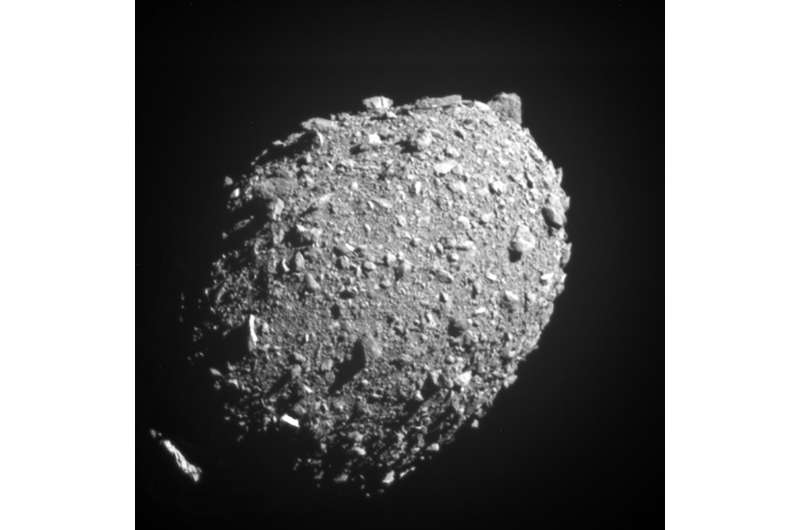
Space debris: A quantitative analysis of the in-orbit collision risk and its effects on the Earth
Friday, 30 June 2023 14:29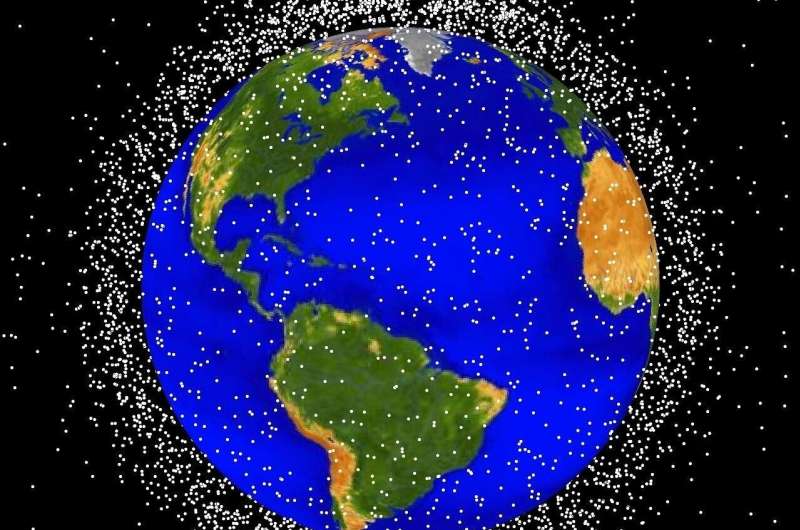
The amount of space debris has not stopped increasing since the first satellite was launched in 1957. The European Space Agency (ESA) estimates that there are more than 131,000,000 useless space waste objects, between 1 millimeter and 10 centimeters, currently orbiting around the Earth at an average speed of 36,000 kilometers per hour, which come from different sources such as last stages of rockets, satellites that are no longer operational, and even tools lost in space by astronauts.
"Any piece larger than 1 centimeter is potentially lethal in case of collision," says the Professor at the University of Malaga José Luis Torres, who, together with Professor Anelí Bongers, has coordinated a project on Space Economy that establishes, from a quantitative point of view, a theoretical model that determines the rate of satellite launches that is optimal to maximize benefits based on the amount of space debris.
Particularly, using data from the NASA and the ESA, the developed model is based on computational simulations that analyze the effects of anti-satellite tests on the amount of space debris and the probability of collision with operational satellites –there are currently around 6,000 satellites in orbit.
Spacesuit design: Maurizio De Vincentiis
Friday, 30 June 2023 13:35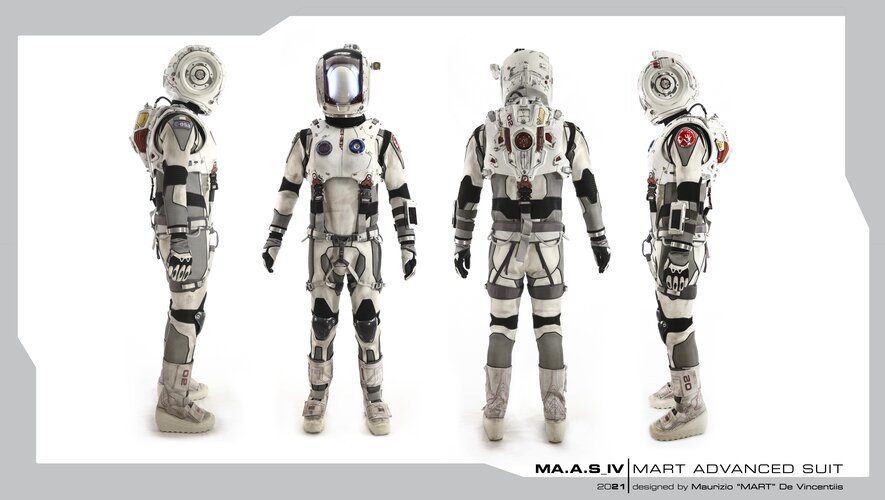 Image:
Spacesuit design: Maurizio De Vincentiis
Image:
Spacesuit design: Maurizio De Vincentiis Mission control is GO for Euclid launch
Friday, 30 June 2023 13:30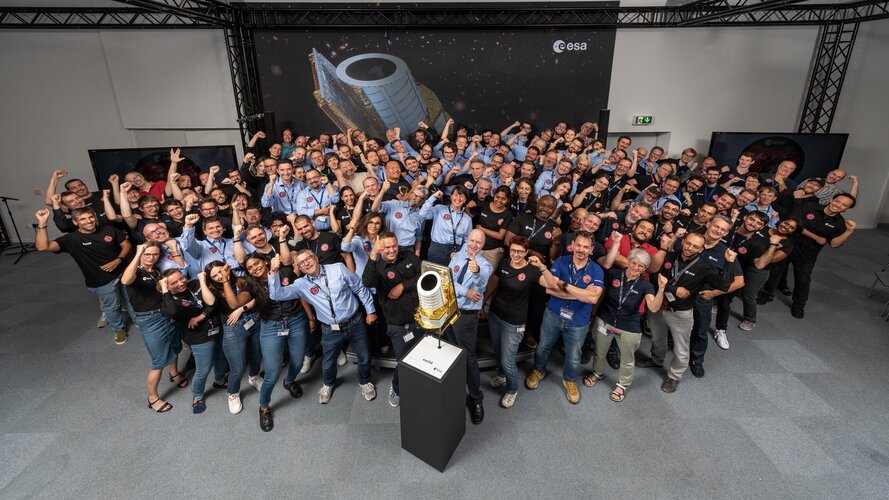 Image:
Euclid ore-launch briefing complete at ESA's mission control
Image:
Euclid ore-launch briefing complete at ESA's mission control Week in images: 26-30 June 2023
Friday, 30 June 2023 12:50
Week in images: 26-30 June 2023
Discover our week through the lens
Complex organosulfur molecules on comet 67P: Evidence from Rosetta orbiter and the lab
Friday, 30 June 2023 12:20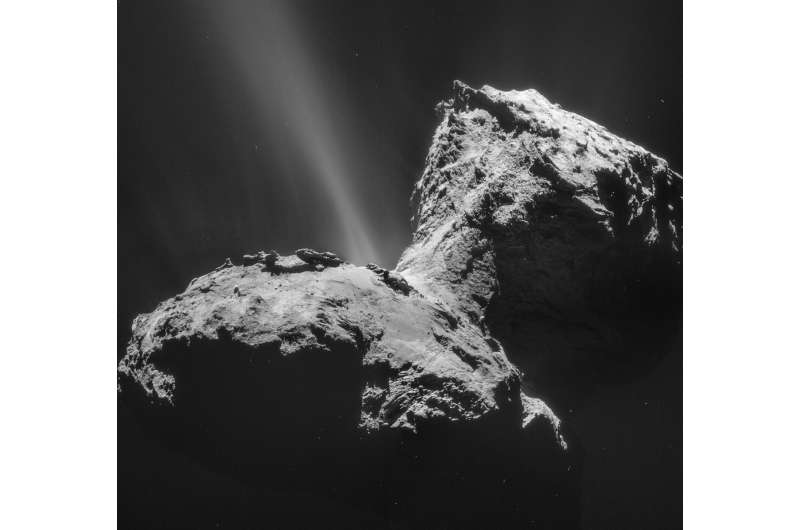
The Rosetta orbiter spectrometer for ion and neutral analysis (ROSINA) instrument orbited comet 67P to revolutionize our understanding of cometary material composition. A key finding of the satellite was to explore the composition of comet 67P/Churyumov-Gerasimenko. In a new report published in Science Advances, Ahmed Mahjoub and a team of planetary scientists in the Jet Propulsion Lab at CalTech, the Space Science Institute Colorado, and the University of Bern in Switzerland, used the ROSINA data to study dust particles volatilized during a dust event in September 2016.
The scientists reported the detection of large organosulfur species, on the comet's surface. They then conducted laboratory simulations to indicate the formation of this material from chemical reactions initiated by irradiating mixed ices containing hydrogen sulfide. The results highlighted the significance of cometary sulfur chemistry and its presence in precometary materials to facilitate the detection of organosulfur materials in other comets and icy small bodies by using the James Webb Space Telescope.
Australia scraps billion-dollar satellite program
Friday, 30 June 2023 09:29 Australia on Friday said it was axing a billion-dollar plan to develop a series of space satellites, as it tries to cut costs amid an economic slowdown and cost-of-living crisis.
The Aus$1.2 billion (US$770 million) National Space Mission for Earth Observation was unveiled just last year and hailed as a key plank in developing an Australian space industry.
The programme's aim was to desi
Australia on Friday said it was axing a billion-dollar plan to develop a series of space satellites, as it tries to cut costs amid an economic slowdown and cost-of-living crisis.
The Aus$1.2 billion (US$770 million) National Space Mission for Earth Observation was unveiled just last year and hailed as a key plank in developing an Australian space industry.
The programme's aim was to desi Australia-first communications network paves the way for high-speed data in space
Friday, 30 June 2023 09:29 The $6.5 million project, which has received a $4.4 million grant from the Australian Space Agency, $500,000 each from the Western Australian Government and The University of Western Australia, will employ a new technology that uses super-fast lasers to talk to satellites and spacecraft.
It's called 'free-space optical communications', and it's 1000 times faster than the radio communicatio
The $6.5 million project, which has received a $4.4 million grant from the Australian Space Agency, $500,000 each from the Western Australian Government and The University of Western Australia, will employ a new technology that uses super-fast lasers to talk to satellites and spacecraft.
It's called 'free-space optical communications', and it's 1000 times faster than the radio communicatio Hera Propulsion Module leak test – time-lapse
Friday, 30 June 2023 09:00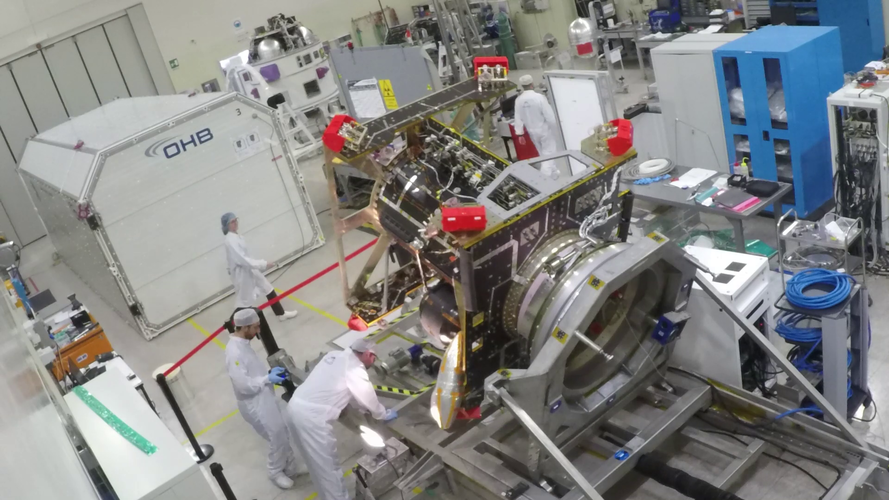 Video:
00:02:23
Video:
00:02:23
ESA’s Hera mission for planetary defence will perform a close-up survey of the Dimorphos asteroid in deep space. But first Hera needs to cross millions of kilometres of space to get there. That is the task of Hera’s Propulsion Module, forming around half of the overall spacecraft, which has been prepared by Italy’s Avio company. Formed of a central tube plus a supporting structure, the Module has been fitted with propellant tanks, piping and thrusters (inside the red protective covers). But before it can be joined to Hera’s other element, the Core Module, this Propulsion Module had
Space to empower rural food producers
Friday, 30 June 2023 08:00
ESA has strengthened their partnership with the UN International Fund for Agricultural Development (IFAD) to help vulnerable small-scale food producers not only increase their ability to grow food but adapt to climate change by using state-of-the-art Earth observation data.
Euclid: preparing for launch
Friday, 30 June 2023 07:49
ESA’s mission Euclid is getting ready for lift-off on a SpaceX Falcon 9 from Cape Canaveral in Florida, USA, with a target launch date of 1 July 2023.
Imagine walking on Hera’s asteroid
Friday, 30 June 2023 07:28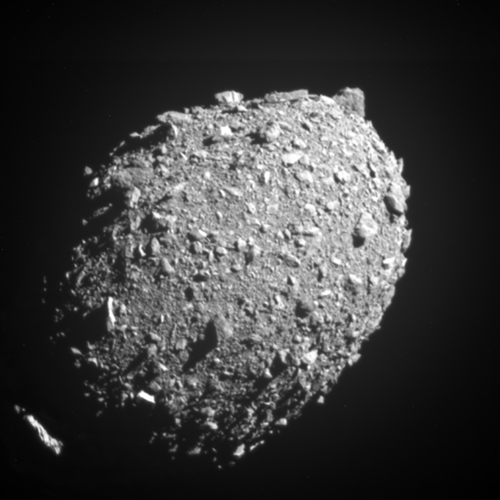
The team working on ESA’s Hera asteroid mission has glimpsed its destination. Last September NASA’s DART mission returned images of the boulder-strewn Dimorphos moonlet just before impacting it, in an audacious and ultimately successful attempt to shift its orbit around its parent asteroid Didymos.
Following on from DART, Hera will carry with it a pair of shoebox-sized ‘CubeSats’ that conclude their own observations by landing on Dimorphos. Team members have been using DART images to help visualise this process of touchdown. And in the process they can't help but imagine: what would it be like for human
Gravity goes lunar: putting LESA to the test
Friday, 30 June 2023 07:19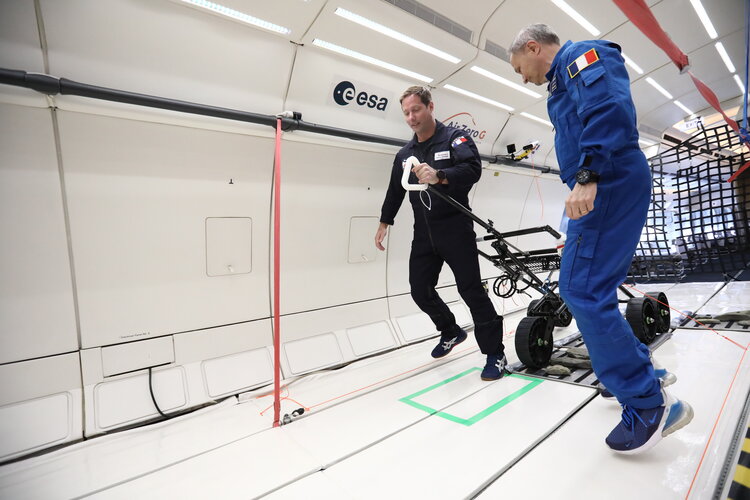 Image:
Testing the Lunar Equipment Support Assembly (LESA) investigation during a partial gravity parabolic flight.
Image:
Testing the Lunar Equipment Support Assembly (LESA) investigation during a partial gravity parabolic flight. Earth from Space: Southwest Netherlands
Friday, 30 June 2023 07:00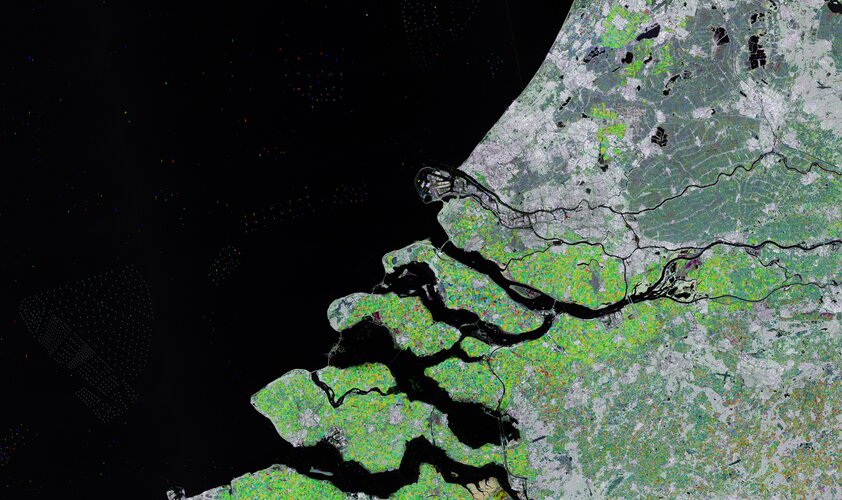 Image:
Rotterdam and part of the Zeeland province in southwest Netherlands are featured in this radar image acquired by Copernicus Sentinel-1.
Image:
Rotterdam and part of the Zeeland province in southwest Netherlands are featured in this radar image acquired by Copernicus Sentinel-1. 